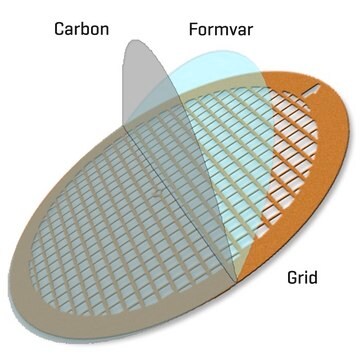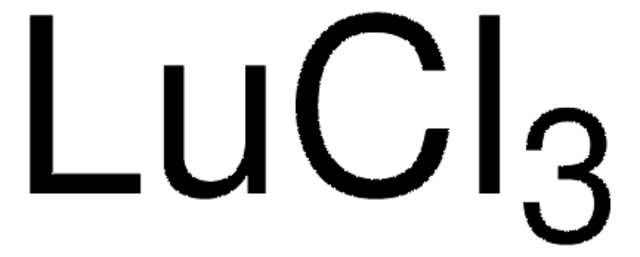547980
Tris[N,N-bis(trimethylsilyl)amide]samarium(III)
98%
Sinonimo/i:
1,1,1-Trimethyl-N-(trimethylsilyl)silanamine samarium(III) salt, Tris(1,1,1,3,3,3-hexamethyldisilazanato)samarium
About This Item
Prodotti consigliati
Saggio
98%
Forma fisica
solid
Impiego in reazioni chimiche
core: samarium
reagent type: catalyst
Punto di fusione
93-106 °C (lit.)
Stringa SMILE
C[Si](C)(C)N([Sm](N([Si](C)(C)C)[Si](C)(C)C)N([Si](C)(C)C)[Si](C)(C)C)[Si](C)(C)C
InChI
1S/3C6H18NSi2.Sm/c3*1-8(2,3)7-9(4,5)6;/h3*1-6H3;/q3*-1;+3
MUFPZLRACJKLCI-UHFFFAOYSA-N
Categorie correlate
Applicazioni
- Heterobimetallic samarium(III) complexes
- Binuclear lanthanide complexes
Catalyst for:
- Coordination polymerization of renewable butyrolactone-based vinyl monomers
- Intramolecular hydroamination of non-activated alkenes
- Chiral functionalization of isoxazoles
- Enantioselective hydroamination / cyclization
Avvertenze
Danger
Indicazioni di pericolo
Consigli di prudenza
Classi di pericolo
Flam. Sol. 1 - Skin Corr. 1B - Water-react 2
Rischi supp
Codice della classe di stoccaggio
4.3 - Hazardous materials which set free flammable gases upon contact with water
Classe di pericolosità dell'acqua (WGK)
WGK 3
Punto d’infiammabilità (°F)
36.0 °F - closed cup
Punto d’infiammabilità (°C)
2.2 °C - closed cup
Dispositivi di protezione individuale
Eyeshields, Faceshields, Gloves, type P3 (EN 143) respirator cartridges
Certificati d'analisi (COA)
Cerca il Certificati d'analisi (COA) digitando il numero di lotto/batch corrispondente. I numeri di lotto o di batch sono stampati sull'etichetta dei prodotti dopo la parola ‘Lotto’ o ‘Batch’.
Possiedi già questo prodotto?
I documenti relativi ai prodotti acquistati recentemente sono disponibili nell’Archivio dei documenti.
Il team dei nostri ricercatori vanta grande esperienza in tutte le aree della ricerca quali Life Science, scienza dei materiali, sintesi chimica, cromatografia, discipline analitiche, ecc..
Contatta l'Assistenza Tecnica.


![1,8-Diazabicyclo[5.4.0]undec-7-ene, polymer-bound 100-200 mesh, extent of labeling: 1.5-2.5 mmol/g loading, 1 % cross-linked with divinylbenzene](/deepweb/assets/sigmaaldrich/product/structures/198/416/1df5854b-ea20-4d3a-a11f-73abb549da60/640/1df5854b-ea20-4d3a-a11f-73abb549da60.png)





